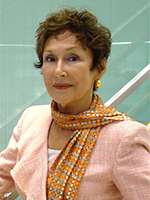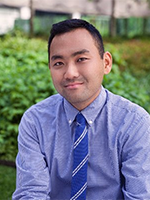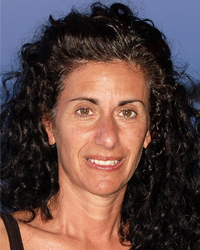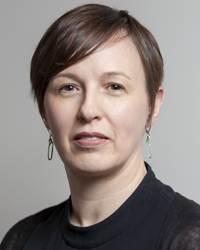Abstract
This article examines how grandmothers raising their grandchildren in skipped-generation households support their grandchildren’s cognitive development across the life course, predominantly by prioritizing their education in daily routines and by communicating with, learning from, and advocating on behalf of their grandchildren with teachers, healthcare providers, caseworkers, and social service agency staff. When children exhibited cognitive delays and disabilities, grandmothers sought institutional support, even as they faced additional barriers not experienced by parents, including not being legal guardians, not having all the necessary information to assist healthcare providers with diagnoses, and fear of losing their grandchildren should they seek assistance.
Key Words
cognitive development, cognitive delays and disabilities, parenting, grandparent caregiving, skipped-generation households, grandfamily, kinship care
When I asked 45-year-old Angela what she wanted for her grandchildren’s future she said, “I really just want to put God in ’em and education and they can take it from there.” Like other grandmothers I interviewed, Angela demonstrated her prioritization of her 9- and 5-year-old grandchildren’s education in her daily childrearing practices.
“Like they come home from school, go right in the kitchen, sit at that table. They be like, ‘Hey grandma, it seem like I’m still at school.’ I say, ‘Well maybe you is, so get them books out.’ Come home from school they have to do their homework, then they can like play games or whatever. Let’s get that studying while it’s still fresh in the mind when you get outta school ... I wanna put that education in them. Education is important. It’ll get you somewhere in life. It’ll get you a good job and everything. That’s number one. I want them to get their education.”
Angela “put that education” in her grandchildren by also reading to them nightly and volunteering in their classrooms. She was not alone. In this article, I’ll show that grandmothers routinely supported their grandchildren’s cognitive development by 1) observing their learning abilities; 2) building cognitive, language, and communication skill-building tasks and activities into their daily routines; and 3) communicating with teachers and healthcare providers about learning problems. Grandmothers understood that investing in education was the best way to prepare their grandchildren for success. So, they 4) devoted time, energy, and resources to teaching their grandchildren and to facilitating their education (e.g., transporting them to and from school/childcare, enrolling them in and participating in supplemental educational programs). They also 5) advocated on their behalf with teachers, school administrators, caseworkers, and social service agency staff to ensure that they received the resources, services, and support they needed to learn.
Cognitive development refers to thinking across the lifespan (e.g., learning, problem-solving, creating, reasoning, conceptualizing, categorizing, remembering, planning, etc.) and is measured according to age-appropriate milestones. A cognitive delay is related to a child’s inability to process information intellectually, based upon what is appropriate for their age. In addition to impacting a child’s ability to think, learn, and problem solve, a cognitive delay may also impact their communication, behavior, and social skills. Approximately 12 in 1,000 children have a cognitive delay; these delays range from mild to severe and include, but are not limited to, learning disabilities, attention deficit disorder (ADD), attention deficit hyperactivity disorder (ADHD), and autism (The Warren Center, n.d.).
Supporting the developmental needs of children with cognitive delays was more challenging for the grandmothers in my study. Grandmothers’ limited experience with cognitive delays and disabilities, combined with their lack of legal authority, impeded their ability to get the resources and services their grandchildren needed. Yet, grandmothers raising grandchildren with cognitive and developmental delays also prioritized their grandchildren’s education, and they sought and fought to ensure that their grandchildren got an appropriate and adequate education.
Supporting Children’s Cognitive Development Across the Life Course
Generally, until a child was enrolled in pre-K (ages 4 to 5), grandmothers were primarily responsible for teaching their grandchildren and, along with the child’s doctor, were responsible for noting whether or not their grandchild was reaching appropriate developmental milestones. Once children became preschoolers, early childhood educators also taught them and assessed their development. Along with healthcare professionals and caseworkers, early childhood educators communicated with grandmothers about developmental expectations and concerns and directed grandmothers to early intervention programs.
Grandmothers supported children’s (ages 5 to 12) and adolescents’ (ages 12 to 18) educational needs by ensuring that they attended school, behaved while there, and did their schoolwork. Their hands-on involvement, which included tutoring them and volunteering at school, was meant to keep grandchildren on track and demonstrate that someone cared about them and their education. This involvement was contingent upon the child’s age and educational needs; the grandmother’s relationship with the school, teachers, and biological parents; and her time, energy, motivation, and capacity. Additionally, healthcare professionals, caseworkers, and teachers monitored child development among school-age children and adolescents and helped grandmothers get the appropriate evaluation services when they were concerned about any developmental issues.
‘Supporting the developmental needs of children with cognitive delays was more challenging for the grandmothers.’
Sixty-nine-year-old Ida typified how grandmothers taught age-appropriate cognitive skills to their toddler grandchildren. Ida and her husband UZ became their newborn great-granddaughter’s licensed foster parents when she was born with neonatal drug exposure and taken into state custody. Ida described teaching 1-year-old Sugar colors, letter recognition, and hand/eye coordination: “She’s learnin’ how to talk. She watch you, whatever you’re doin’, she gonna try to do. And you try to hide somethin’ she goes right to it because she look. She learn so fast what color you had. And, she go right to it and find it.”
Ida planned to add ABC blocks to Sugar’s play-and-learn sessions. She was also teaching Sugar to use crayons to scribble—the precursor to teaching her how to write.
Forty-one-year-old Shalonda demonstrated how grandmothers supported their grandchildren’s education when early childhood educators or teachers expressed concern about cognitive delays. When Shalonda’s granddaughter Dana was in kindergarten, her teacher expressed that there was a gap between her ability and age expectations. Initially, Shalonda “didn’t want to believe” the assessment but after Dana’s teacher explained it, she accepted it.
She said, “I bought phonics games. Cards, flash cards. I pin words up around the house, the letters on the refrigerator. On her door, all kinds of stuff. … I’ll be riding in my car and say, ‘What color is that? What does that say?’ I will do that all the way to work, all the way home, to kinda keep her up on stuff.”
Over time, Dana’s grandmother, childcare provider, and preschool teacher improved her learning ability and outcomes. Although Dana was now “spelling words, she’s reading well. She’s not very good at homework though, not doing it, but turning it in,” Shalonda divulged Dana’s first-grade teacher’s verdict: “Her attention span is not where it should be.”
Fifty-year-old Dorothy showed how grandmothers not only devoted time to teaching their grandchildren, but also acted in their best interest by challenging institutional protocols and missteps. Dorothy had cared for her 7-year-old grandson Vashon for 4 years because of his mother’s housing instability and struggle with drug addiction. She described:
“For two years … I was off work. … I would teach him math and we developed a really good close relationship then. … I taught him to write. He could write whatever I put on the paper … could copy it back to me. And I was teaching him the first-case addition. One plus one, two plus two, one plus two, and one plus three. The ones and the twos. And he was doing that when he got into preschool.”
In the predominately white school Vashon attended, he did homework and was excelling. But once Dorothy started working, she had to change his school to accommodate her schedule.
Homework at the new school, “would be tracing letters or coloring, just doing whatever.” Dorothy met with the principal and had Vashon replicate the work she had taught him in their kitchen-turned-makeshift Romper Room, then asked, “Does this look like a boy that needs to trace Ks all day? This school is holding him back. I’m displeased,” Dorothy said.
She continued, “I found another school for my grandson and he’ll be leaving here. I worked with school reform, I know what the curriculum should be like for a preschooler and just tracing the letter K is just not it.” She expressed concern for “the other neighborhood kids” who would receive an inferior education.
‘I found another school for my grandson and he’ll be leaving here. I worked with school reform, I know what the curriculum should be like for a preschooler.’
Cora was one of many grandmothers who attended school events and teacher’s conferences and volunteered at their grandchildren’s school. Cora had raised six of her eight grandchildren (four as a licensed foster and adoptive parent and two in a private kinship arrangement) because of their mothers’ drug addiction and distressed romantic relationships. At the time of the interview, she was still raising two of them, an 18- and a 15-year-old. Cora kept track of and called the homes of children who missed school: “And that would help my grandchildren. I’d see them every day they go to school, I’d be right behind them.” In addition to showing them she cared, Cora’s presence kept her grandchildren “in line,” meaning well-behaved.
Grandmothers acted as tutors by first learning and then teaching their grandchildren various subjects. When I arrived at the home of 81-year-old Virginia and her husband Norman to conduct our interview, her kitchen table was piled with large stacks of index cards that she had made for her 11-year-old grandson Omar. He had been distracted in school because he had been visiting with his father, who’d recently been released from prison.
She described, “I sit up here sometimes, like the other night … he went with his dad and he lied about his homework. So, he got home late and he was tired and he went to bed … I stayed up and it was some kind of math and I’m not the best in math; some of this new stuff that they have with the graphing and stuff. Anyway, I stayed up until almost 4:00 a.m. trying to get this stuff together and then I got him up and tried to explain it to him so he wouldn’t get a F.”
Grandmothers supported their grandchildren’s cognitive development by investing in their learning experiences in age-appropriate ways. They relied upon their experience raising their own children and on educators, healthcare professionals, and caseworkers to determine what was developmentally appropriate and to improve their strategies.
Supporting Children with Cognitive Delays and Disabilities
Grandmothers often were the first to detect cognitive delays in their grandchildren because they spent the most time with them. Children in this study exhibited cognitive delays and disabilities due to neonatal drug exposure, biological or birth-related issues (e.g., being born prematurely, genetic conditions, poor eyesight or hearing), and for unknown reasons. These grandmothers found themselves in one of two positions in these cases. In the first group were grandmothers who were aware of the source of children’s symptoms because it was the reason for their assuming caregiving responsibilities. The second group comprised those who were forced to try to uncover the cause of their grandchild’s issues. Grandmothers in both groups supported their grandchildren’s cognitive development by intensifying their institutional embeddedness.
Responding to children who exhibited cognitive delays was complicated. Unlike parents in similar situations, grandmothers faced additional barriers, including not being legal guardians, not having all the necessary information to assist healthcare providers with diagnoses, and fear of losing their grandchildren should they seek assistance. It was especially challenging for grandmothers who had to search for a diagnosis, which involved piecing together information from the child’s symptoms, doctors’ assessments, and recalling parental risk behaviors.
Additionally, grandmothers had to consider how easily they could navigate specific institutions, based upon their familiarity with the institution’s operations, their legal status, and possession (if needed) of the child’s medical card. As a result, there was sometimes a mismatch between children’s needs and the care they received.
Fifty-two-year-old Cheryl showed how grandmothers noticed and responded to children’s cognitive delays when they had information about the possible causes:
“When Tevin was born, he used to cry all the time. I mean all the time. Just cry. … I’d say, ‘Why you cry so much?’ Come to find out he was having withdrawals from that reefer or drug or whatever she was on [Tevin’s mother’s crack cocaine addiction had contributed to his developmental disabilities]. She wasn’t staying with me so I didn’t know what she was on. He used to jump around all the time. … When he was first born, he used to do … everything strange.”
Cheryl took Tevin to Chicago Memorial Hospital to get him tested: “When they got through with him, he had everything wrong with him. Glasses that thick. Everything. Attention deficit disorder. Learning disability, everything.” Tevin attended special education classes through the 11th grade and shifted to general education classes in the 12th grade. He was attending college when the interview was conducted, but Cheryl repeated this process with another grandchild who was diagnosed with ADD.
Forty-eight-year-old Natalie and her husband Rod also knew the source of their grandson’s cognitive delay. She described the impact of him being born a “preemie” at 15 weeks weighing 1 pound, 11 ounces.
“So, he spent the first 9 months of his life in the hospital. [Laughter] So, he was like developmentally delayed. They tried to put a lot of labels on him and I’m like it’s not gonna happen. This boy’s gonna be okay. He’s graduating and goin’ to first grade this year.”
Interviewer: “And they tried to say he was developmentally delayed?”
“They tried to put a lot of labels on him. He is a little bit delayed. I mean, I was in denial. ‘There’s nothin’ wrong with him. He’s gonna be fine.’ But he is a little delayed. There are a lot of things his brother can do that he can’t.”
‘Natalie pushed back against the school placing her grandson in special education.’
Natalie pushed back against the school placing her grandson in special education. Instead, they agreed to do an Individualized Education Program and “watch him.” Natalie illustrated the hesitancy, and in some cases resistance, that some grandmothers shared about getting their grandchildren diagnosed with a cognitive delay, which would involve “labeling them” with that delay: “I said I didn’t want it (special education), so with the evaluation, they said, ‘He really don’t need to be in there because he is keepin’ up.’ I didn’t, I don’t want labels on him.”
Sixty-three-year-old Eliza and her husband, Tony, had cared for six of their grandchildren (ages 16, 12, 9, 7, 4, and 3 years old) for a total of 7 years as the children’s mother struggled with substance addiction. All of the children except one were considered special needs and were in special education. Eliza learned about the early learning home visiting program through Metropolitan Family Services.
She explained, “The Easter Seal people would come in like three days a week. Elijah, the 4-year-old, he was in the program first so … Monday, Tuesday, and Thursday were his days. After he aged out then Gavin got in, so he was having three days of speech therapy. They come to the house and work with them. … the younger one [Gavin] had physical therapy … at one time there were four different therapies going.”
For Eliza, the programs were incredibly helpful: When she first got her now 3- and 4-year-old grandchildren, “they couldn’t eat on their own … they weren’t talking, so the speech therapy helped. The younger one wasn’t walking, so the physical therapy helped him.” The older children participated in the child and adolescent mental health support program and tutoring programs. Although her schedule had eased up some as her six grandchildren had gotten older, Eliza was still extremely busy. Her complicated schedule involved making sure that she and her grandchildren were available, dressing presentably every day, and ensuring that the house was clean so that the various specialists and social workers could use the same bathroom as her six grandchildren. As a testament to how “beneficial” her “very strenuous” schedule was to her grandchildren, Gavin was, “out of the early intervention program and he’ll be going to school.”
Typifying what it was like for grandmothers who sought medical assistance to pinpoint why their grandchildren were experiencing cognitive delays with unknown causes, 48-year-old Kathleen described how her 15-year-old granddaughter Tayauna’s cognitive delays and disabilities manifested:
“Because she stayed in Pampers until she was about 2 and 6 months. She couldn’t talk. It took her … let’s see, how old was she when she … really actually started speaking words? Probably about 10. And, okay, about 12 she started to speak sentences but not a complete sentence. ‘Til this day she can’t speak a complete sentence, not really, not like we could; not like a normal child.”
It took Kathleen 4 years to get Tayauna properly diagnosed.
“So, I stayed at every hospital ’cuz it took me years to try to determine what was her diagnosis. Because no doctor could find a diagnosis to determine what was wrong with her. Because my daughter had a normal birth, full-term, but they couldn’t understand why she was like she is … So, I took her to just about every hospital in Chicago. And then when I took her to osteopathic that’s when they just came up with developmental delay.”
Grandmothers based their strategies to support grandchildren not just on educational needs but on what they could actually provide. It was more difficult for grandmothers caring for children with cognitive delays and disabilities to sync up their schedules and skill sets. I define syncing up as aligning schedules and skill sets with grandchildren’s needs, common among grandmothers seeking to save and maximize time, balance paid work and care work, and respond appropriately to children’s developmental needs.
Some grandmothers struggled to fully embrace the physical, mental, and emotional labor of caregiving and postponed responding to caregiving demands, a strategy I refer to as “stalling.” While most grandmothers devoted time to teaching and facilitating the education of their grandchildren, especially non-school-age children and those with cognitive delays, some practiced stalling to privilege their own mental and physical health challenges, and difficulty fulfilling their responsibilities. This was particularly true for children who required more institutional support, forcing grandmothers to engage with healthcare providers, teachers, caseworkers, and social service agencies.
Conclusion
Raising their own children and relying on feedback they received from educators, healthcare providers, and caseworkers armed grandmothers with an understanding of the broad timeframes by which children should engage in age-specific tasks and helped them to catch children’s developmental delays early. Grandmothers invested in their grandchildren’s learning experiences, even when it meant eliminating other activities and struggling to sync up their schedules and skills to meet their new responsibilities. But they didn’t do so alone. As with fulfilling children’s social, emotional, and physical developmental needs, grandmothers relied on support from parents, partners, and extended kinship networks to meet their grandchildren’s cognitive developmental needs.
When caring for children with cognitive delays and disabilities, obtaining a proper diagnosis was not only paramount to adequately attending to children’s needs but also was imperative when seeking additional resources and services, such as Supplemental Security Income, early intervention and supplemental learning programs, and mental health support. The efforts of these grandmothers to search for a diagnosis and get their grandchildren medical treatment were complicated by their legal and socioeconomic status, and by their lack of information about their grandchildren’s afflictions.
LaShawnDa Pittman, PhD, is an associate professor of American Ethnic Studies and the Joff Hanauer Honors Professor of Western Civilization at the University of Washington in Seattle.
Photo credit: Shutterstock/Monkey Business Images
References
The Warren Center. (n.d.). What are cognitive developmental delays? https://thewarrencenter.org/help-information/cognitive/what-are-cognitive-developmental-delays/









